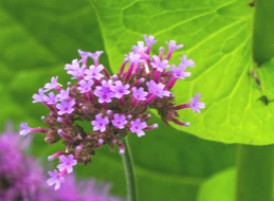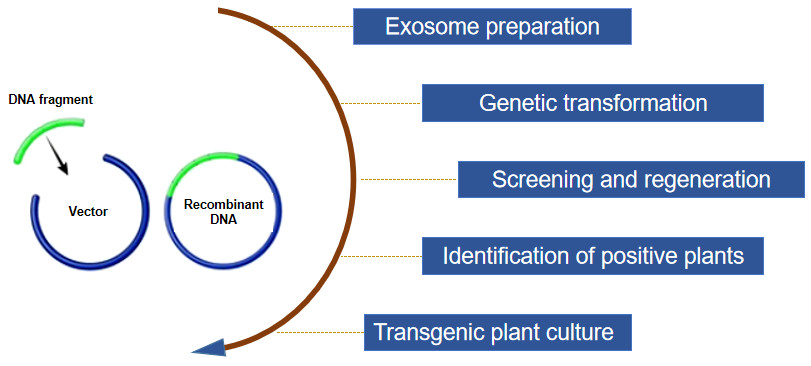Verbena bonariensis (Purpletop Vervain) Transformation
Verbena bonariensis is a perennial herb native to South America, Brazil, Argentina, etc. It has good medicinal value. In addition, Verbena bonariensis has good ornamental value and is often planted in large areas to create landscape effects. Verbena bonariensis is widely cultivated worldwide due to its good medicinal and ornamental value. Lifeasible is an industry leader in plant genetic transformation, based on our advanced technology platform and experienced team of experts. Relying on our advanced technology platform and experienced expert team, we have established a technology platform for the genetic transformation of Verbena bonariensis based on the problems faced in the genetic transformation of Verbena bonariensis, after years of technological research, and continuous optimization of the transformation conditions, to help most scientific researchers work together to promote the progress of Verbena bonariensis research.

What do we offer?
- Selection and preparation of the explants. In the process of genetic transformation, we first need to select suitable explants, usually leaves or stem segments of Verbena bonariensis, and sterilize these explants under sterile conditions.
- Preparation of culture medium. To promote the growth and regeneration of Verbena bonariensis, we need to formulate culture media containing specific hormones and nutrients. The basic medium commonly used is MS medium to which growth hormones and cytokinin such as 6-BA and NAA are added to induce the formation of adventitious shoots.
- Agrobacterium-mediated transformation. Agrobacterium tumefaciens is a commonly used genetic transformation vector that can be used to introduce target genes into plant cells by infesting plant explants. In the genetic transformation of Verbena bonariensis, selecting appropriate Agrobacterium strains and infestation conditions are critical, including the OD600 value of Agrobacterium, the infestation time, and the concentration of the repressor. We have identified the optimal conditions for the genetic transformation of Verbena bonariensis after years of experimental research to ensure the improvement of the transformation success rate.
- Screening and regeneration. The transformed cells need to be screened in a medium containing a screening agent, and the commonly used screening agent is kanamycin. After screening the transformed cells, they need to be transferred to a regeneration medium to promote the growth and differentiation of transformed cells.
- Molecular identification. We characterized the integration and expression of target genes in the transformed cells by molecular biology techniques such as PCR and qPCR.
- Culture of transgenic plants. After screening and characterization, the transgenic plants need to be cultured under suitable conditions until they grow into mature plants.
Our experimental procedure

Our research objectives for Verbena bonariensis transformation
- Cold resistance research. So far, we have helped researchers study the physiological and molecular response mechanisms of Verbena bonariensis in low-temperature environments by screening for genes related to cold resistance through transgenic technology. For example, our researchers obtained the genes related to cold resistance in Verbena bonariensis through screening. Further, through a genetic transformation system, these genes were transferred into Verbena bonariensis, and their functions were characterized. We obtained a positively transformed plant that showed significant cold resistance. The plants showed lower malondialdehyde (MDA) content, relative conductivity, hydrogen peroxide (H2O2), and superoxide anion (O2-) content than the wild type, while antioxidant enzyme activities and osmoregulatory substances were higher than those of the wild-type under low-temperature stress.
- Improve the ornamental properties of Verbena bonariensis. The technical support we provide for the genetic transformation of Verbena bonariensis can help researchers gain a deeper understanding of the response mechanism of Verbena bonariensis to environmental stresses and improve its ornamental value and adaptability through genetic improvement.
Why choose us?
- Perfect service support. We provide full-process genetic transformation service support, including preliminary experimental guidance, timely feedback on experimental progress, and guidance on cultivation of transgenic plants after project completion.
- Professional technology platform. We continuously optimize the transformation system and have established a large-scale and standardized genetic transformation technology platform, which can ensure the transformation success rate to the greatest extent.
- Efficient technical services. We can carry out genetic transformation projects all year round, helping our clients save a lot of research time.
Lifeasible has developed an advanced genetic transformation system for Verbena bonariensis based on the obstacles of traditional breeding of Verbena bonariensis. We have always adhered to the concept of wholeheartedly promoting the progress of plant science research, relying on the perfect technology platform to provide plant research technology services. If you are interested in us, please feel free to contact us.
For research or industrial raw materials, not for personal medical use!

